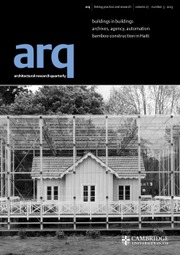No CrossRef data available.
Article contents
Fluid freedom: An empathetic pool design empowering a client with multiple sclerosis
Published online by Cambridge University Press: 03 November 2025
Extract
This paper is a case study that reflects on the intricate process of crafting a specialised private training pool, located in Highgate, London. The client is KP, a woman in her 50s who developed Multiple Sclerosis (MS) more than a decade ago. In her everyday life, KP uses a wheelchair and relies on continuous support. She can navigate semi-independently without the wheelchair by using her arms and upper body to push and pull herself through space with sufficient support such as from (door) frames, furniture, handlebars, etc. She has one side that is more dependent with one foot less responsive. When overcoming thresholds, for example, she therefore often requires additional help lifting. Generally, independent movement through space is slow, and her navigation and speed are inherently determined by the availability of surrounding support. This paper explores the multifaceted journey of delivering a training pool that embraces a holistic approach and encompasses the physical, psychological, and aesthetic dimensions of the client’s needs. To reflect on these important issues, it draws on an interview between the client and author, who is also the architect.
Information
- Type
- Full Paper
- Information
- Creative Commons
- This is an Open Access article, distributed under the terms of the Creative Commons Attribution licence (http://creativecommons.org/licenses/by/4.0), which permits unrestricted re- use, distribution and reproduction, provided the original article is properly cited.
- Copyright
- © The Author(s), 2025. Published by Cambridge University Press

